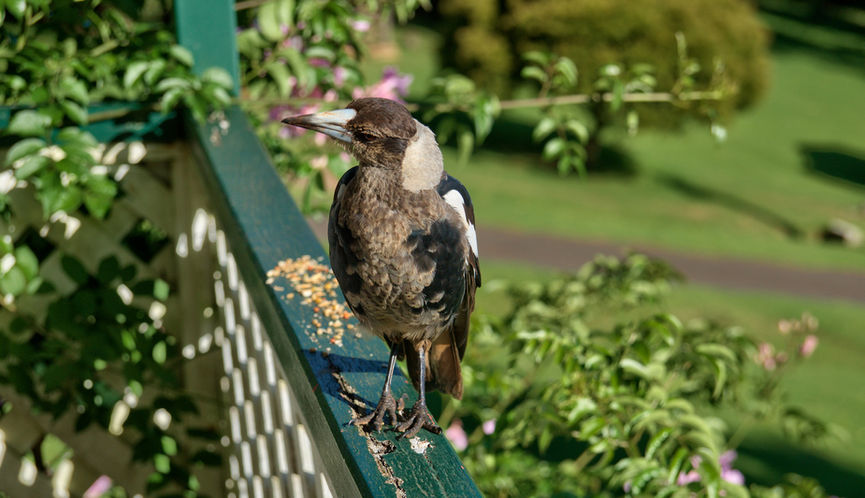Australian Magpie
Gymnorhina tibicen
Quick facts
Other names: Black-backed Magpie, White-backed Magpie.
Size: Similar to Kookaburra.
Range and Lifestyle: Resident throughout Australia.
Food: Mainly underground grubs, but also worms, snails, millipedes and spiders, and occasionally seeds and small lizards.
Breeding: Mainly late winter and spring. Nest is an untidy bowl of sticks, lined with grass. Eggs 3-5, pale bluish-white, speckled all over with red-brown. Mum builds the nest and incubates alone for 3 weeks. Dad and helpers feed chicks for 5 weeks.
A national icon, the Australian Magpie, like many birds in our nation, was named after a similar-looking bird in Britain. Like our magpie, the Eurasian Magpie is a fairly large black-and-white songbird, though the two species are unrelated on the evolutionary tree.
Well known and revered throughout the continent for its melodious bugling song, the Australian Magpie has also earned a formidable reputation as a fierce warrior, often attacking humans if they walk or cycle in the vicinity of their nest. Magpies live in and defend their territories year-round, but swooping only happens during the breeding season. This swooping is done by the dads to protect their chicks, and stops after the chicks have left the nest. Very few Magpies (roughly 12%) swoop at humans, and only 5% actually make contact.
Magpies are smart birds with good memories – they can tell the difference between one human face and another and remember this for years. They’ve been known to trust humans who show they’re not dangerous, introducing their young to these people and allowing them to come close even during the breeding season. New and unfamiliar people are the ones that get swooped, along with those who mistreat Magpies or their nests.
One amazing feature of Magpies is their ability to hear the sound of beetle grubs moving under the ground. This is why you will usually find them walking very slowly on lawns before plunging their bills into the ground. Other ground-foraging species use their eyes rather than ears to find worms, searching for tiny mounds of dirt left by worms as they move below the surface.
Like many of Australia’s songbirds, Magpies are social, living in pairs or groups of up to 15 birds. Territorial groups usually comprise a breeding pair and their offspring from previous years, all of whom help to defend the territory and raise more young - a system known as cooperative breeding. Unlike most other cooperatively-breeding species, however, Magpie groups often contain more females than males, as males tend to leave the territory after 1-2 years to join a large non-territorial flock.
Text © Richard Noske 2019 CC BY-NC-SA
Just like human children, young magpies like to chase each other, and play hide and seek.
Audio
Photo gallery
Video gallery
References
HANZAB 7A; Kaplin (Aust Magpie, CSIRO), Jones.


















